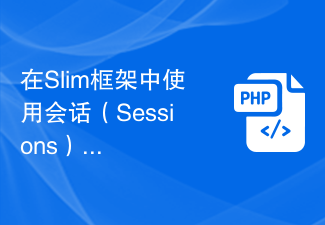 Web Front-end
Web Front-end JS Tutorial
JS Tutorial How to use Layui to develop a social network application that supports user login and registration
How to use Layui to develop a social network application that supports user login and registration
How to use Layui to develop a social network application that supports user login and registration
With the rapid development of the Internet, social network applications have become indispensable in people's daily lives part. When developing such applications, a powerful front-end framework is indispensable. Layui is an excellent front-end UI framework. It provides rich components and simple and clear APIs to help us quickly build powerful and beautiful web applications. This article will introduce how to use Layui to develop a social network application that supports user login and registration, and provide specific code examples.
- Preparation
First of all, we need to prepare Layui related resources. You can download the latest version of Layui compressed package from the Layui official website (www.layui.com). After unzipping, introduce it into our project. You can place the layui.css file in the project's style folder, and the layui.js file in the project's script folder. - Basic layout
Social network applications usually include header navigation bar, sidebar, content area and other parts. We can use Layui's layout components to build these basic components.
<body>
<div class="layui-layout layui-layout-admin">
<!-- 头部导航栏 -->
<div class="layui-header">
<!-- logo -->
<div class="layui-logo">社交网络</div>
<!-- 用户登录信息 -->
<ul class="layui-nav layui-layout-right">
<li class="layui-nav-item">
<a href="javascript:;"><img class="layui-nav-img lazy" src="/static/imghwm/default1.png" data-src="avatar.jpg" alt="How to use Layui to develop a social network application that supports user login and registration" >用户名</a>
<dl class="layui-nav-child">
<dd><a href="">个人中心</a></dd>
<dd><a href="">退出登录</a></dd>
</dl>
</li>
</ul>
</div>
<!-- 侧边栏 -->
<div class="layui-side">
<ul class="layui-nav layui-nav-tree">
<li class="layui-nav-item layui-nav-itemed">
<a href=""><i class="layui-icon layui-icon-home"></i>首页</a>
</li>
<li class="layui-nav-item">
<a href=""><i class="layui-icon layui-icon-user"></i>用户管理</a>
</li>
<li class="layui-nav-item">
<a href=""><i class="layui-icon layui-icon-friends"></i>好友管理</a>
</li>
</ul>
</div>
<!-- 内容区域 -->
<div class="layui-body">
<!-- 内容 -->
</div>
</div>
</body>- User login and registration
Social network applications must support user login and registration functions. We can use Layui's form components and Layer pop-up plug-ins to achieve these functions.
<!-- 登录表单 -->
<form class="layui-form" action="">
<div class="layui-form-item">
<label class="layui-form-label">用户名</label>
<div class="layui-input-block">
<input type="text" name="username" required lay-verify="required" placeholder="请输入用户名" autocomplete="off" class="layui-input">
</div>
</div>
<div class="layui-form-item">
<label class="layui-form-label">密码</label>
<div class="layui-input-block">
<input type="password" name="password" required lay-verify="required" placeholder="请输入密码" autocomplete="off" class="layui-input">
</div>
</div>
<div class="layui-form-item">
<div class="layui-input-block">
<button class="layui-btn" lay-submit lay-filter="login">登录</button>
<button type="reset" class="layui-btn layui-btn-primary">重置</button>
</div>
</div>
</form>
<!-- 注册表单 -->
<form class="layui-form" action="">
<div class="layui-form-item">
<label class="layui-form-label">用户名</label>
<div class="layui-input-block">
<input type="text" name="username" required lay-verify="required" placeholder="请输入用户名" autocomplete="off" class="layui-input">
</div>
</div>
<div class="layui-form-item">
<label class="layui-form-label">密码</label>
<div class="layui-input-block">
<input type="password" name="password" required lay-verify="required" placeholder="请输入密码" autocomplete="off" class="layui-input">
</div>
</div>
<div class="layui-form-item">
<div class="layui-input-block">
<button class="layui-btn" lay-submit lay-filter="register">注册</button>
<button type="reset" class="layui-btn layui-btn-primary">重置</button>
</div>
</div>
</form>
<!-- JavaScript代码 -->
<script>
//监听登录表单提交
form.on('submit(login)', function(data){
//请求服务器进行登录验证
//...
return false; //阻止表单跳转
});
//监听注册表单提交
form.on('submit(register)', function(data){
//请求服务器进行注册处理
//...
layer.msg('注册成功');
return false; //阻止表单跳转
});
</script>- Data interaction
In social network applications, data interaction must be carried out with the back-end server. We can use Layui's Ajax module to send HTTP requests and interact with the backend server.
//模拟用户登录
function login(username, password) {
//发送登录请求
$.ajax({
url: '/login', //后端登录接口
type: 'post',
data: {
username: username,
password: password
},
success: function(res){
if(res.code === 200){
//登录成功
layer.msg('登录成功');
//跳转到用户主页
window.location.href = '/user_home';
} else {
//登录失败
layer.msg('登录失败');
}
},
error: function(){
//请求失败
layer.msg('请求失败');
}
})
}
//模拟用户注册
function register(username, password) {
//发送注册请求
$.ajax({
url: '/register', //后端注册接口
type: 'post',
data: {
username: username,
password: password
},
success: function(res){
if(res.code === 200){
//注册成功
layer.msg('注册成功');
//跳转到登录页面
window.location.href = 'login.html';
} else {
//注册失败
layer.msg('注册失败');
}
},
error: function(){
//请求失败
layer.msg('请求失败');
}
})
}The above are the basic steps and code examples for using Layui to develop a social network application that supports user login and registration. Through the above steps, we can quickly build a simple social network application front-end framework and implement user login and registration functions. Of course, in actual development, it is also necessary to combine back-end technology for data interaction and processing, and to improve various functions, but this article mainly introduces the front-end development part. I hope this article can be helpful to you, and I wish you good results in the development of social network applications!
The above is the detailed content of How to use Layui to develop a social network application that supports user login and registration. For more information, please follow other related articles on the PHP Chinese website!
 PHP开发技巧:如何实现用户登录限制功能Sep 21, 2023 am 11:39 AM
PHP开发技巧:如何实现用户登录限制功能Sep 21, 2023 am 11:39 AMPHP开发技巧:如何实现用户登录限制功能在网站或应用程序开发中,用户登录限制功能是一项非常重要的安全措施。通过限制用户的登录尝试次数和登录频率,可以有效防止账号被恶意破解或暴力破解。本文将介绍如何使用PHP实现用户登录限制功能,并提供具体的代码示例。一、用户登录限制功能的需求分析用户登录限制功能通常包括以下几个方面的需求:登录尝试次数限制:当用户连续输入错误
 如何在PHP中实现用户登录时发送手机短信验证码和邮件通知Sep 26, 2023 pm 08:40 PM
如何在PHP中实现用户登录时发送手机短信验证码和邮件通知Sep 26, 2023 pm 08:40 PM如何在PHP中实现用户登录时发送手机短信验证码和邮件通知随着互联网的飞速发展,越来越多的应用程序需要用户登录功能来确保安全性和个性化体验。除了基本的账号密码验证,为了提高用户体验和安全性,许多应用程序还会在用户登录时发送手机短信验证码和邮件通知。本文将介绍如何在PHP中实现这种功能,并提供相应的代码示例。一、发送手机短信验证码1.首先,你需要一个可以发送短信
 如何使用Elasticsearch和PHP构建用户登录和权限管理系统Jul 08, 2023 pm 04:15 PM
如何使用Elasticsearch和PHP构建用户登录和权限管理系统Jul 08, 2023 pm 04:15 PM如何使用Elasticsearch和PHP构建用户登录和权限管理系统引言:在当前的互联网时代,用户登录和权限管理是每个网站或应用程序必备的功能之一。Elasticsearch是一个强大而灵活的全文搜索引擎,而PHP是一种广泛使用的服务器端脚本语言。本文将介绍如何结合Elasticsearch和PHP来构建一个简单的用户登录和权限管理系统
 UniApp实现用户登录与授权的细节解析Jul 05, 2023 pm 11:54 PM
UniApp实现用户登录与授权的细节解析Jul 05, 2023 pm 11:54 PMUniApp实现用户登录与授权的细节解析在现代移动应用开发中,用户登录和授权是必不可少的功能。UniApp作为一个跨平台的开发框架,提供了一种方便的方式来实现用户登录和授权。本文将探讨UniApp中实现用户登录和授权的细节,并附上相应的代码示例。一、用户登录功能的实现创建登录页面用户登录功能通常需要一个登录页面,该页面包含用户输入账号和密码的表单以及登录按钮
 如何使用PHP数组实现用户登录和权限管理的功能Jul 15, 2023 pm 08:55 PM
如何使用PHP数组实现用户登录和权限管理的功能Jul 15, 2023 pm 08:55 PM如何使用PHP数组实现用户登录和权限管理的功能在开发网站时,用户登录和权限管理是非常重要的功能之一。通过用户登录,我们可以验证用户身份并保护网站的安全性。而权限管理则能够控制用户在网站中的操作权限,确保用户只能访问他们被授权的功能。在本文中,我们将介绍如何使用PHP数组来实现用户登录和权限管理的功能。我们将使用一个简单的示例来演示这个过程。首先,我们需要创建
 在Slim框架中使用会话(Sessions)实现用户登录和注销的方法Jul 28, 2023 pm 11:21 PM
在Slim框架中使用会话(Sessions)实现用户登录和注销的方法Jul 28, 2023 pm 11:21 PM在Slim框架中使用会话(Sessions)实现用户登录和注销的方法简介:会话(Sessions)是Web应用程序中常用的一种技术,它可以用来存储和管理用户相关的数据,例如用户的登录状态等。Slim框架作为一个轻量级的PHP框架,提供了简洁的API来处理会话。本文将介绍如何在Slim框架中使用会话来实现用户登录和注销的功能。安装Slim框架首先,我们需要在P
 如何使用PHP和CGI实现用户注册和登录功能Jul 21, 2023 pm 02:31 PM
如何使用PHP和CGI实现用户注册和登录功能Jul 21, 2023 pm 02:31 PM如何使用PHP和CGI实现用户注册和登录功能用户注册和登录是许多网站必备的功能之一。在本文中,我们将介绍如何使用PHP和CGI来实现这两个功能。我们将通过代码示例来演示整个过程。一、用户注册功能的实现用户注册功能允许新用户创建一个账户,并将其信息保存到数据库中。以下是实现用户注册功能的代码示例:创建数据库表首先,我们需要创建一个数据库表,用于存储用户信息。可
 如何用PHP实现CMS系统的用户注册/登录功能Aug 07, 2023 am 11:31 AM
如何用PHP实现CMS系统的用户注册/登录功能Aug 07, 2023 am 11:31 AM如何用PHP实现CMS系统的用户注册/登录功能?随着互联网的发展,CMS(ContentManagementSystem,内容管理系统)系统成为了网站开发中非常重要的一环。而其中的用户注册/登录功能更是不可或缺的一部分。本文将介绍如何使用PHP语言实现CMS系统的用户注册/登录功能,并附上相应的代码示例。以下是实现步骤:创建用户数据库首先,我们需要建立一


Hot AI Tools

Undresser.AI Undress
AI-powered app for creating realistic nude photos

AI Clothes Remover
Online AI tool for removing clothes from photos.

Undress AI Tool
Undress images for free

Clothoff.io
AI clothes remover

AI Hentai Generator
Generate AI Hentai for free.

Hot Article

Hot Tools

SublimeText3 Mac version
God-level code editing software (SublimeText3)

SublimeText3 Linux new version
SublimeText3 Linux latest version

SecLists
SecLists is the ultimate security tester's companion. It is a collection of various types of lists that are frequently used during security assessments, all in one place. SecLists helps make security testing more efficient and productive by conveniently providing all the lists a security tester might need. List types include usernames, passwords, URLs, fuzzing payloads, sensitive data patterns, web shells, and more. The tester can simply pull this repository onto a new test machine and he will have access to every type of list he needs.

WebStorm Mac version
Useful JavaScript development tools

SublimeText3 English version
Recommended: Win version, supports code prompts!





